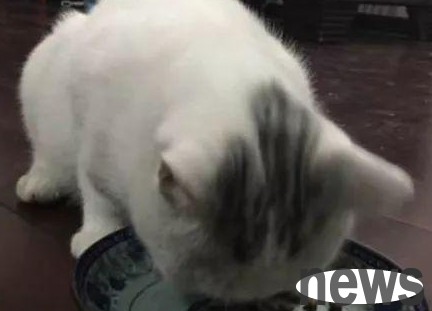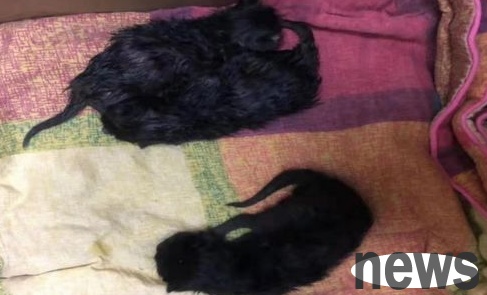You need to pay attention to inflammatory bowel diseases in cats! Inflammatory intestinal disease (IBD) in cats is not diagnostically specific and is a syndrome caused by a series of gastrointestinal disorders associated with chronic inflammation of...
You need to pay attention to inflammatory bowel diseases in cats! Inflammatory intestinal disease (IBD) in cats is not diagnostically specific and is a syndrome caused by a series of gastrointestinal disorders associated with chronic inflammation of the stomach, small intestine and or colon. It is also one of the culprits for weight loss in older cats. The cat's pancreatic duct connects the common bile duct and enters the duodenum. It is precisely because of this anatomical structure that inflammation of the liver and gallbladder system, pancreas, and gastrointestinal tract can affect each other and become inflamed. Many scholars believe that inflammation of the pancreas or biliary tract is mostly related to retrograde infection of the small intestine, and chronic intestinal inflammation and chronic vomiting caused by inflammatory intestinal diseases in cats are considered to be the main cause of trisomy inflammation.

1. Cause
IBD is defined as a primary syndrome. The current prevalent hypothesis believes that cats' IBD is similar to that of humans and dogs. They are all caused by local gastrointestinal mucosa immune dysfunction, accompanied by intolerance to symbiotic bacteria and food antigens, which ultimately lead to chronic intestinal inflammation. Some scholars also believe that IBD is a disease related to genetic factors. Animal individuals with this genetic tendency have disorders in the gastrointestinal mucosal function during their development. The intestinal immune system is often exposed to many antigens, such as beneficial food antigens, inherent intestinal bacteria, and various intestinal pathogens that may accompany it. The intestinal immune system must be able to identify and distinguish harmful and beneficial antigens to produce appropriate immune responses. However, food sensitivity and IBD are not easy to distinguish, which leads to the overlapping occurrence of these two conditions in the diagnosis of some clinical cases. If the above theory is true, then the treatment goal of IBD should be to reduce antigen stimulation in the gastrointestinal tract and inhibit the local immune response of the gastrointestinal immune system to different antigens.
2. Diagnosis
mainly includes clinical symptoms (such as fever, vomiting, anorexia, abdominal pain, jaundice, dehydration and lethargy, etc.), hematology (ALT, ALKP, elevated Tbil, leukocytosis and left-transfer of the nuclear), pancreatic specific lipase (fPL), ultrasound (hepatobiliary, pancreatic echo abnormality, enlargement, etc.), biopsy or histopathological examination (the main means of diagnosis, but fewer secondary damage examinations will be caused).
III. Treatment
1. Immunosuppressive drug treatment:
Prednisolone: used in pets with moderate or severe IBD, especially those with lymphocyte or eosinophil infiltrating IBD. Anti-inflammatory immunosuppressive dose: 1-3mg/kg orally, once a day; reduce the dose once the symptoms are reduced; reduce the dose every 3-4 weeks.
Dexamethasone: Percutaneous injection can be used in cats with extremely malabsorption diseases or those with difficulty in taking oral medications. In addition, it is also useful for cats with congestive heart failure. Usage: 0.1-0.4mg/kg subcutaneous injection, start once a day and finally change to once every 48-72h.

Budesonide: A new type of glucocorticoid that is metabolized by the liver, and its side effects are theoretically less than prednisolone. The effectiveness of its IBD treatment for cats is still not very clear, but the condition of many cats who use the drug is effectively controlled. Currently, veterinarians usually use prednisolone in the early stage to control the clinical symptoms of diseased animals, and then discontinue prednisolone and start using budesonide. 1mg/cat, once a day (must mix well before use); high doses (2-3mg/cat) can be used for symptom control; it is especially effective for cats and Burmese cats with diabetes. Chlorambucil: is an alkylating agent that can be used in the treatment of prednisolone ineffectively treated with affected cats. When used at high doses, tolerance is easily generated, and daily total blood count examinations should be performed at the same time. Usage: 2mg/cat, oral, once every 48-72h.
Cyclophosphamide: Another alkylating agent, sometimes used in moderate IBD-affected cats. 50mg/cat, oral, once every 3 weeks. Cyclosporin: Some clinicians use this drug to treat refractory IBD cases, especially those with ineffective treatment of high-dose prednisolone.
2. Dietary regulation
is effective for patients with mild and moderate IBD, especially for patients with mild inflammatory cell infiltration (60% of patients).
Add to high protein and easy-to-digest commercial foods.
Metronidazole 5-10mg/kg orally, twice a day (or 15mg/kg orally once a day).
Cobalamin 250ug is intramuscularly once a week for six weeks, or twice a week for three months, or once a month for six months